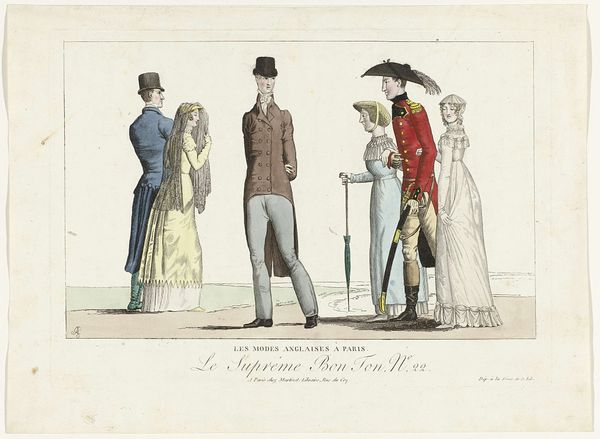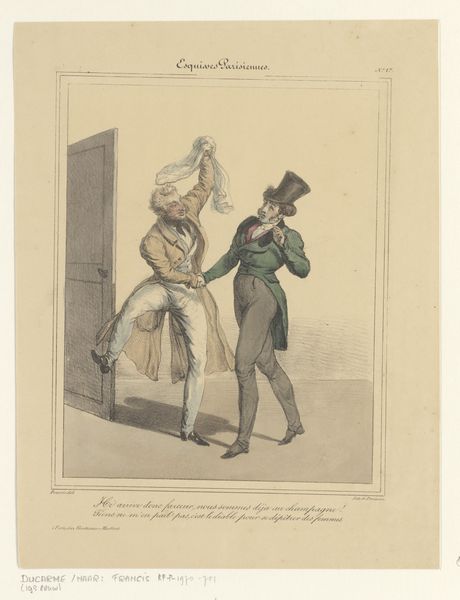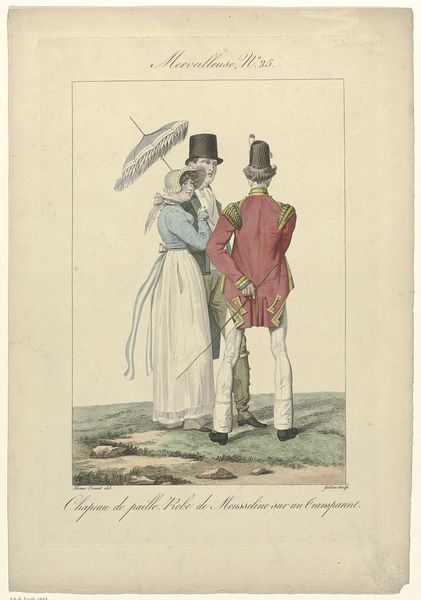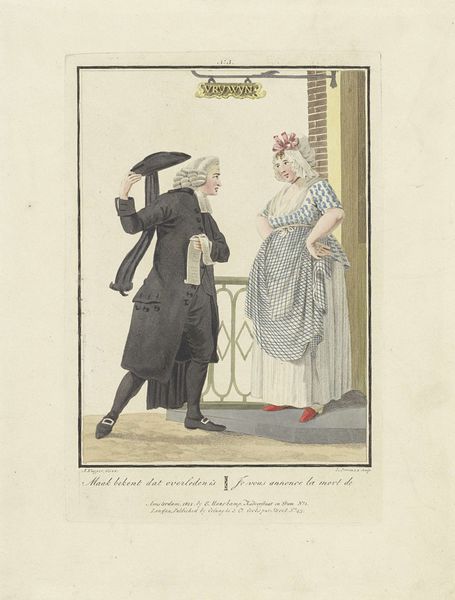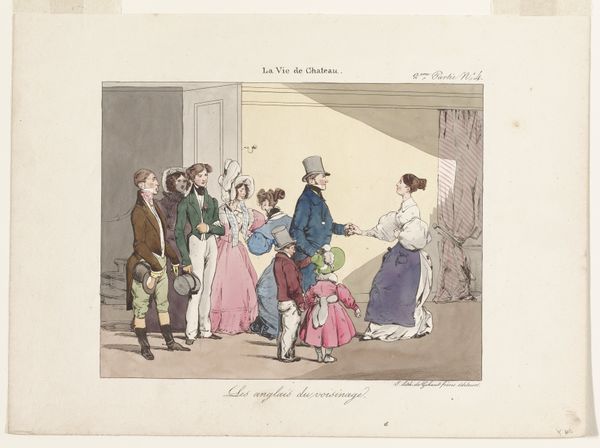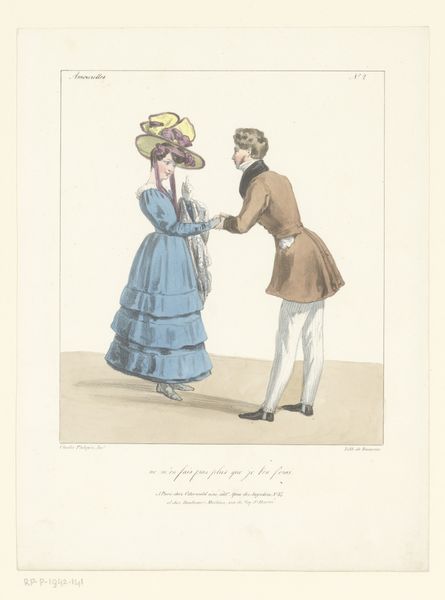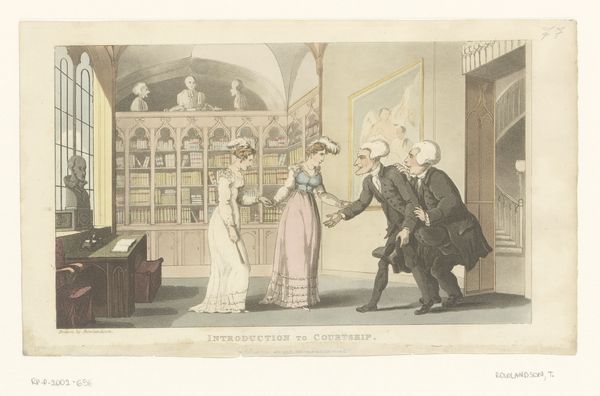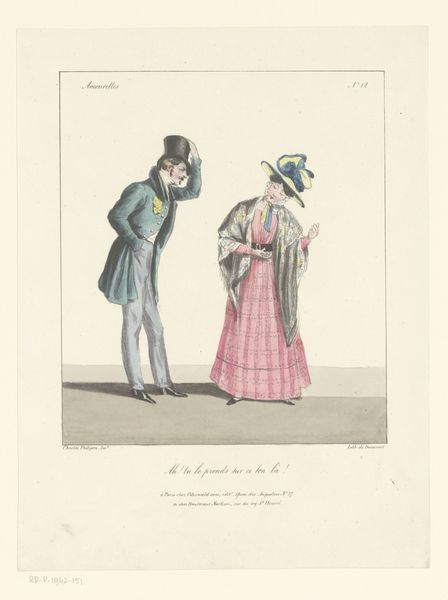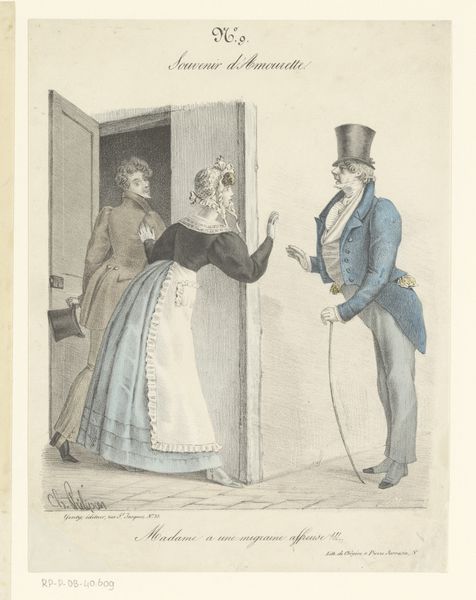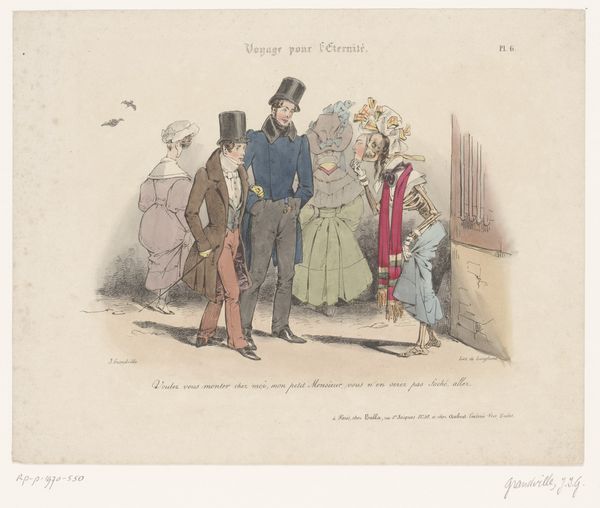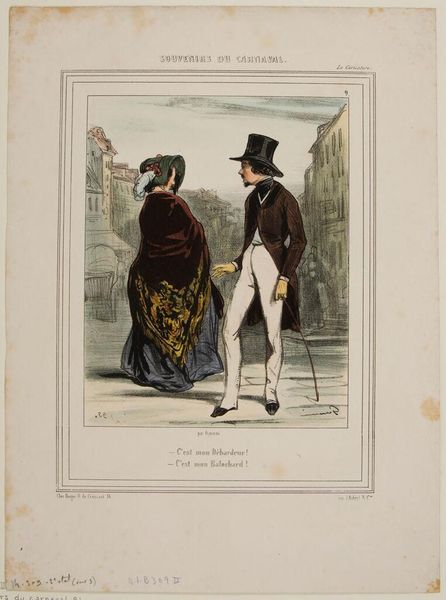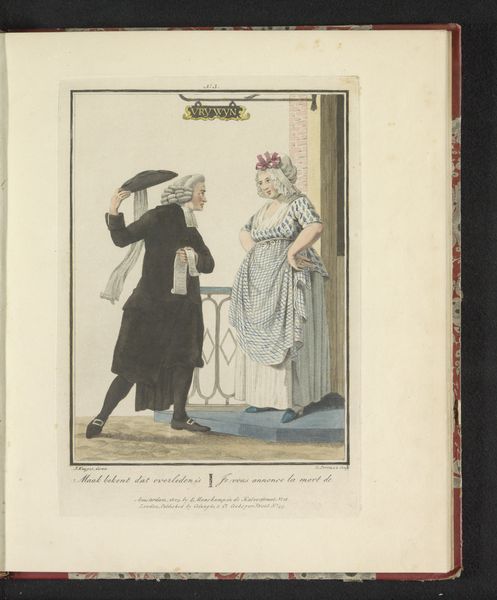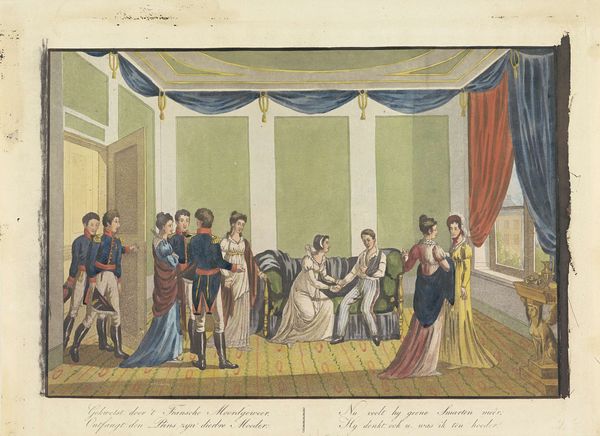
drawing, print, paper
#
portrait
#
drawing
# print
#
paper
#
historical fashion
#
romanticism
#
genre-painting
#
history-painting
#
fashion sketch
#
dress
Dimensions: height 165 mm, width 223 mm
Copyright: Rijks Museum: Open Domain
Editor: This lithograph, titled "La Mode, 31 octobre 1835, Pl.477 : Revue du Monde Elégant (...)," is by Georges Jacques Gatine. I find the stylized portrayal of these elegantly dressed figures quite charming. What can you tell me about it? Curator: This print gives us a window into the world of 1830s Parisian fashion and its representation in popular culture. Notice how the image, while seemingly focused on fashion, is structured like a genre painting, with a background populated by other figures observing or engaging in social activity. How does this contextualization affect our understanding of the depicted clothing? Editor: I guess it's less about the individual garments and more about the act of displaying them and participating in a certain social scene. Almost like being on show. Curator: Precisely! Fashion plates like these played a crucial role in disseminating Parisian style throughout Europe and beyond. The print is labeled “La Mode, Revue du Monde Elegant,” meaning “Fashion, Review of the Elegant World,” indicating the explicit link between clothing and social status. Think about the intended audience – who was consuming these images and what role did they play in constructing and maintaining societal hierarchies? Editor: So it's about how fashion isn't just clothing, but a performance of social standing. Almost a form of propaganda! Curator: It is indeed. This wasn’t just about pretty dresses; it was about solidifying class distinctions and dictating standards of taste. Notice the detail, meant to allow the garment to be reproduced and consumed widely, a symbol of broader socio-economic aspiration of those able to access it. Editor: This print reveals much more than just fashion; it illustrates how clothing actively shaped society. I never would have looked that deeply into this image at first glance. Curator: That's the beauty of historical inquiry. It makes us see art as not isolated, but intricately woven into the fabric of society and power structures.
Comments
No comments
Be the first to comment and join the conversation on the ultimate creative platform.
